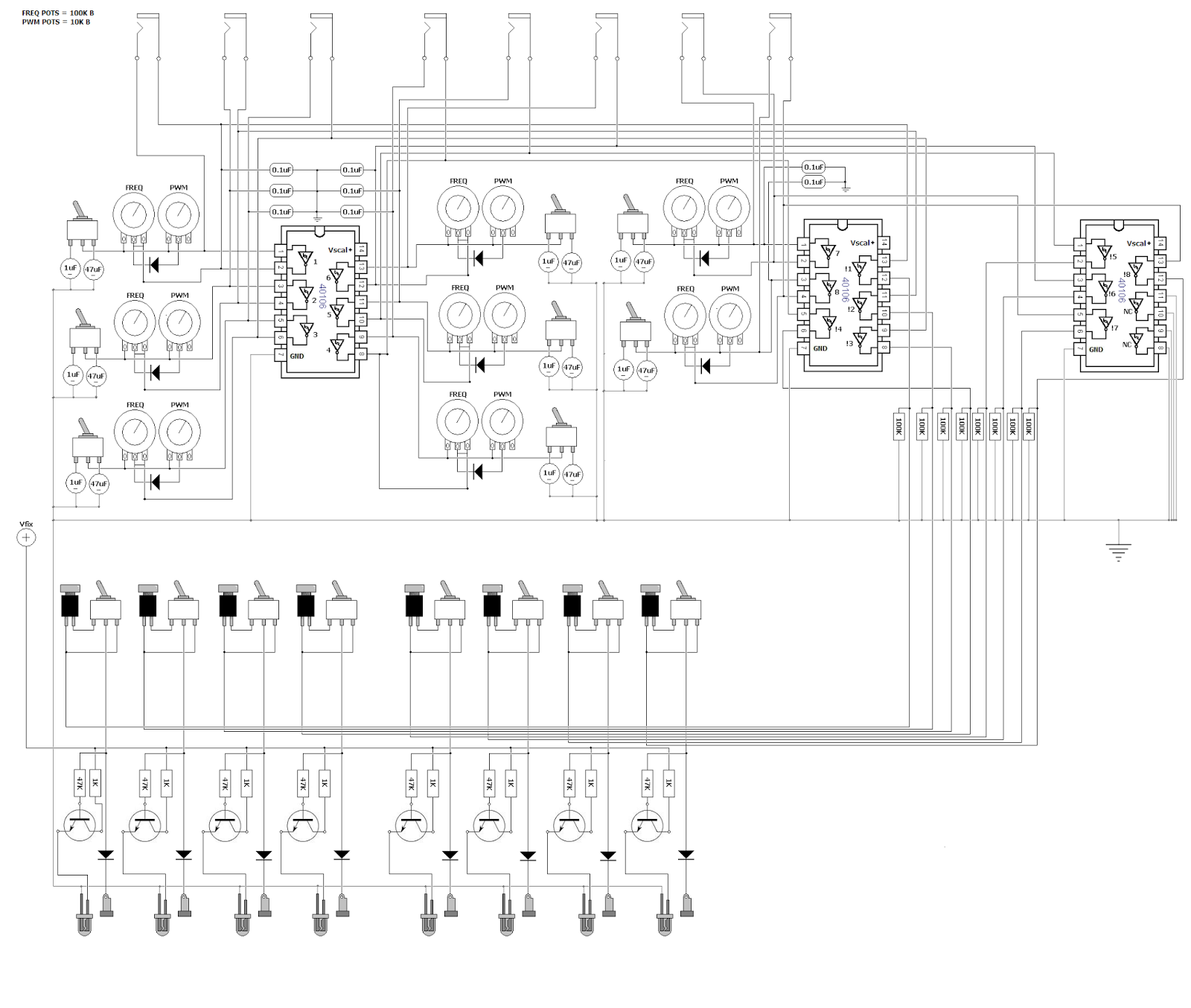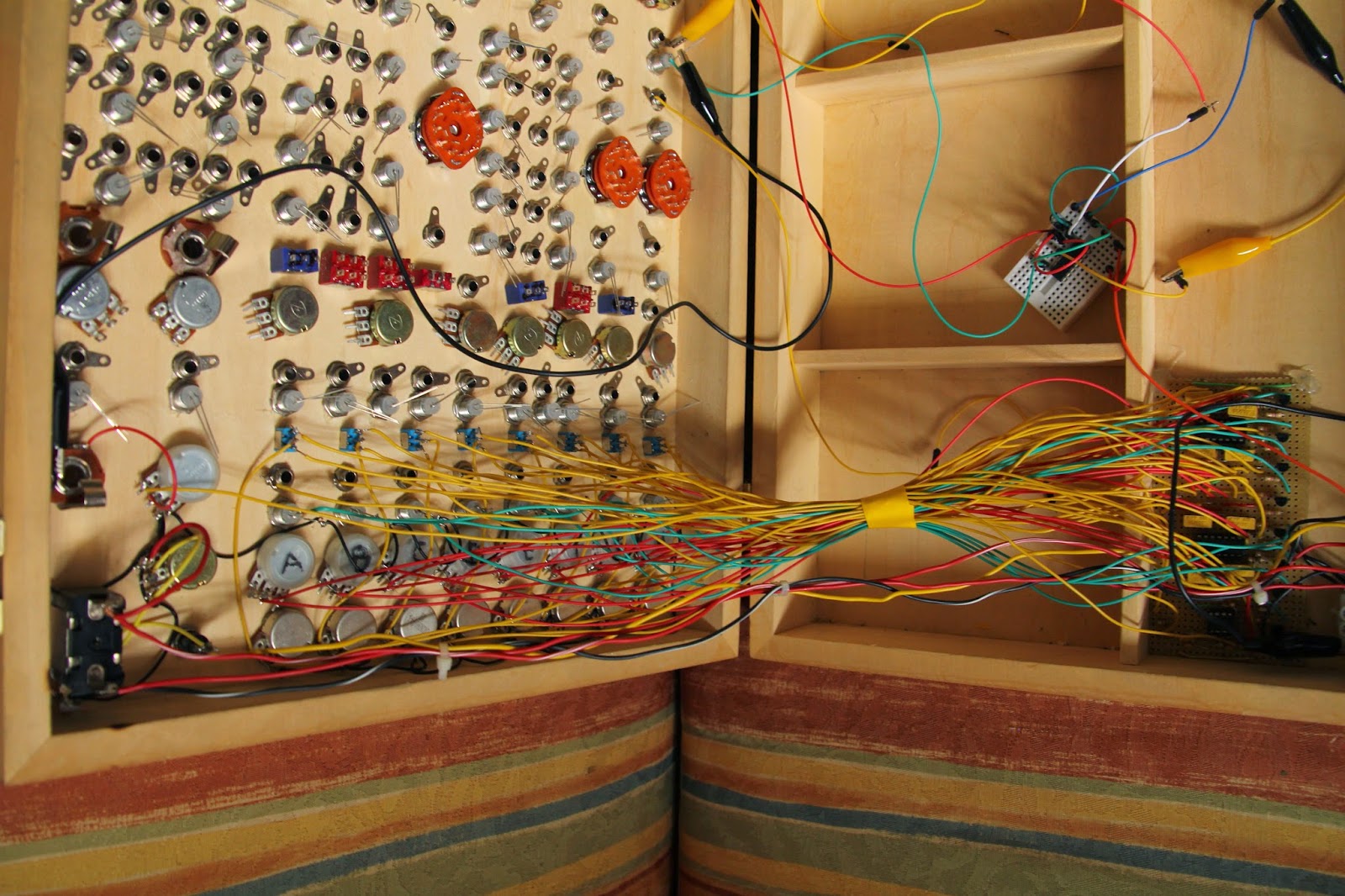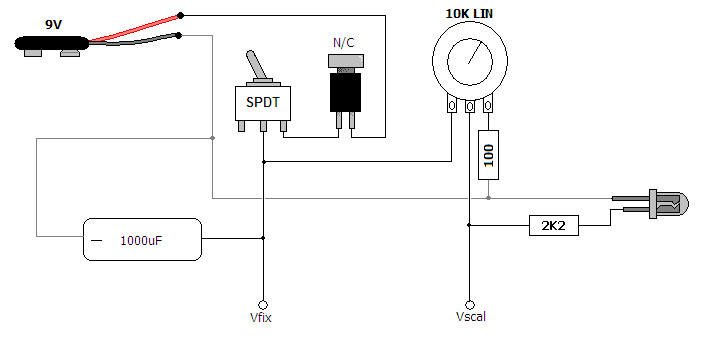Hi guys, I've been busy preparing for a couple of live shows I've been doing over the last month or so. I've been really into the idea of having an electromagnetic source translate into both light and sound at the same time as to have it as an audiovisual mini-installation on stage.
First experiment I wanted to test out was to "read" the video signal from a small monochrome CRT TV with a photocell (just wire a jack plug onto an ordinary solar cell or what have you) and having played around with translating sound to light with these small TV's I thought I wanted to try and combine both of these:
converting sound -> light and from light -> sound again! Kind of like a CRT-TV effects pedal of some sort.
I explain it all in the video beneath but I am using both a regular B/W TV where I send a sound signal into the composite video port which shows up on the screen as horizontal lines flickering in synch with the audio and then I tried with one of my TV-oscilloscopes and a photcell as well. The result is surprisingly interesting as it resembles the original signal quite a lot but still alters it in a distorted, fuzzy, gated kinda way.
I am thinking of developing the TV with a small board before the TV to adjust the signal in various ways, could be really neat! But already you have the brightness and contrast knobs with which you can make the sound only appear on the screen when it reaches a certain intensity level bright enough for the solar cell to detect it, thus making some gating mechanism.
Here's a concert I played in a cold war bunker here in Aarhus. I brought both TV's along together with my sampler, my cacophonator and greeting card sampler to be able to mix various signals to be sent into the TV's. Tye sampler spew out a weird bleeping sound for every clock for its step sequencer so I had to switch over to dry signal with that. I've learned a fair share of do's and don'ts since the first gig with this setup! :-)
Here's a small clip from the concert - event was called 'DIEM Elektro: Isolated Space')
Simultaneously I'd been exploring the wonders of electromagnetic induction coils for picking up various "hidden sounds" in electronic equipment and one night at my rural summmers house I had the pleasure of toying around with my brothers large plasma globe and thought it could be insane to eavesdrop to a plasma globe with the coil. Got a very cheap usb/5v-powered one and the sounds it spurts out through the coil is just heavenly! Such a pure electronic signal, striaght from the source :-)
This one I also plan to evolve into an actual instrument with controls for all kinds of stuff, power supply and modulating the frequency of the coil and os on - lot's to come in the future! Here's a concert where I use the plasma ball "synth" - the sound might not do it much justice as my sampler was filled to burst with weird organic noise samples.
First experiment I wanted to test out was to "read" the video signal from a small monochrome CRT TV with a photocell (just wire a jack plug onto an ordinary solar cell or what have you) and having played around with translating sound to light with these small TV's I thought I wanted to try and combine both of these:
converting sound -> light and from light -> sound again! Kind of like a CRT-TV effects pedal of some sort.
I explain it all in the video beneath but I am using both a regular B/W TV where I send a sound signal into the composite video port which shows up on the screen as horizontal lines flickering in synch with the audio and then I tried with one of my TV-oscilloscopes and a photcell as well. The result is surprisingly interesting as it resembles the original signal quite a lot but still alters it in a distorted, fuzzy, gated kinda way.
I am thinking of developing the TV with a small board before the TV to adjust the signal in various ways, could be really neat! But already you have the brightness and contrast knobs with which you can make the sound only appear on the screen when it reaches a certain intensity level bright enough for the solar cell to detect it, thus making some gating mechanism.
Here's a concert I played in a cold war bunker here in Aarhus. I brought both TV's along together with my sampler, my cacophonator and greeting card sampler to be able to mix various signals to be sent into the TV's. Tye sampler spew out a weird bleeping sound for every clock for its step sequencer so I had to switch over to dry signal with that. I've learned a fair share of do's and don'ts since the first gig with this setup! :-)
Here's a small clip from the concert - event was called 'DIEM Elektro: Isolated Space')
This one I also plan to evolve into an actual instrument with controls for all kinds of stuff, power supply and modulating the frequency of the coil and os on - lot's to come in the future! Here's a concert where I use the plasma ball "synth" - the sound might not do it much justice as my sampler was filled to burst with weird organic noise samples.
Thanks for looking, hope it sparked some inspiration in you - I myself couldn't help but to send dear Dr. Tesla a thought every once in a while listening and looking to the zapping electrodes of the plasma globe 3:-)






















